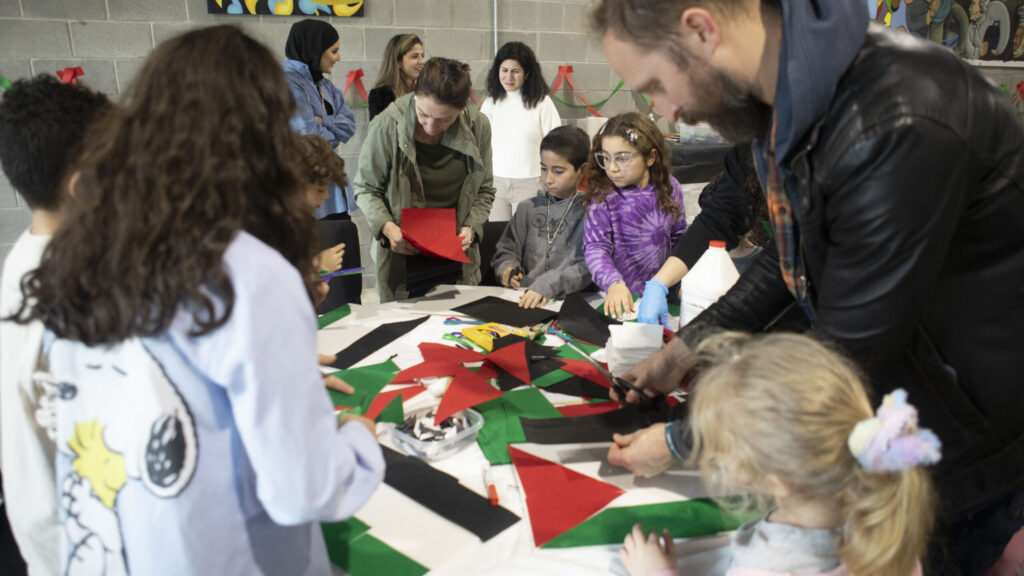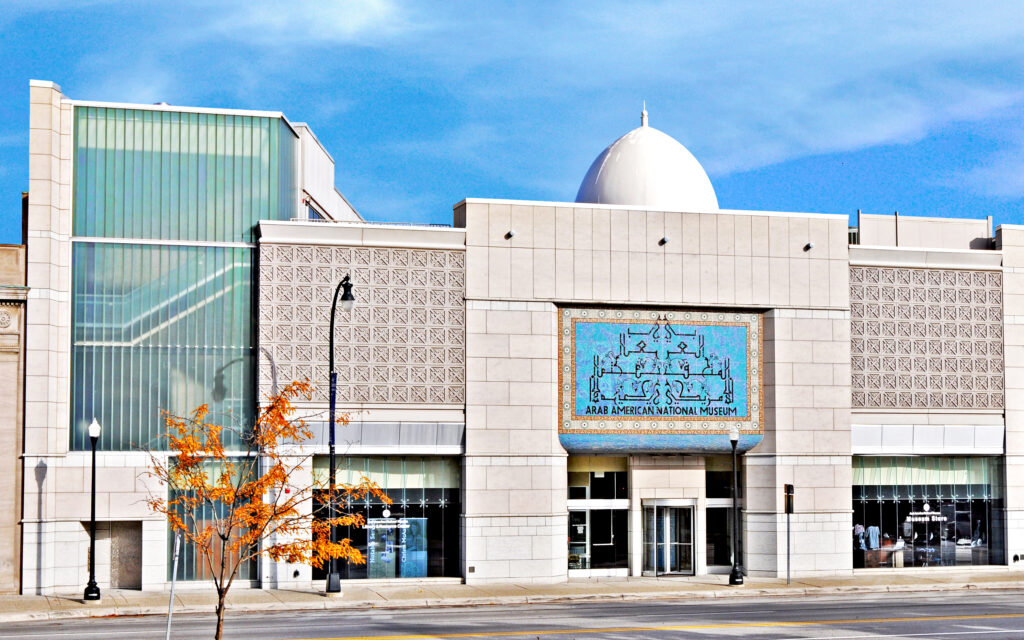Enjoy this article?
Most Museums Journal content is only available to members. Join the MA to get full access to the latest thinking and trends from across the sector, case studies and best practice advice.

After opening its doors almost two decades ago, the Arab American National Museum (AANM) in Dearborn, Michigan, remains the only museum in the United States dedicated to narrating the stories and experiences of Arab Americans, from the earliest immigrants and their descendants to the most recent ones.
Because of its singular nature, and as a culturally specific museum, we recognise our responsibility to not only shed light on the cultural richness and achievements of our communities, but also to respond to crises that impact Arab Americans directly.
Typically, these crises are political, and most often – like the current genocide against Palestinians in Gaza – they are two-fold, bearing tremendous pain, grief and despair within our communities, set against an overwhelming sense of contempt towards our communities, both here in the US and overseas.
This crisis is particularly acute, not only because of the genocidal nature of Israel’s violence against Palestinians, but also for the repressive climate we find ourselves in as Arabs, as Palestinians and as supporters of Palestinian rights.
This current climate of rising anti-Palestinian, Arab and Muslim hate and biases – which has reached not only the halls of government, but also university and college campuses, museum and gallery spaces, and media organisations– has had a palpable and deleterious impact on Arab, Palestinian and Muslim American communities, their allies, and, ultimately, on American society at large.
Anti-Arab and specifically anti-Palestinian harassment and aggression has increased sharply since 7 October 2023: the American Arab Anti-Discrimination Committee (ADC) has documented over five times more anti-Arab hate reports between October and March than they typically receive annually (2,500 vs less than 500).
Hate has manifested itself recently in violent terms, such as the killing of six-year-old Wadie Al-Fayoume last October in Illinois, the shooting of three college students – Hisham Awartani, Kinnan Abdalhamid, and Tahseen Ali Ahmad – in Vermont last Thanksgiving, and, most recently, the attempted murder by drowning of a three-year-old girl in Texas on 19 May this year.
It has also appeared in less lethal but equally uncivil ways: according to Palestine Legal, “[since October 7] Palestinians seeking to narrate their experience and protest the genocide of their people, along with their allies engaged in political dissent, were relentlessly smeared as antisemites and terrorists. Attempts to purge them from universities, schools, companies, and government institutions alike reached unfathomable proportions”.

American artists and cultural workers of all stripes have not been immune to repercussions for speaking up for Palestinian rights of late: for instance, last October, Artforum editor-in-chief David Velasco was fired from his position after the magazine posted an open letter in support of Palestinian liberation.
The 92NY’s Poetry Center canceled an event featuring Pulitzer-prize winning author Viet Thanh Nguyen last October in response to his joining 750 others in signing an open letter published in the London Review of Books calling for a ceasefire in Gaza, leading to Poetry Center staff resignations in protest.
Citing “security concerns,” Indiana University’s Sydney and Lois Eskenazi Museum of Art abruptly canceled Palestinian-American artist Samia Halaby’s first American retrospective in January, a project that was three years in the making.
Lakota artist Daneille SeeWalker had her residency at Art in Public Spaces in Vail, Colorado revoked because of her painting, G is for Genocide, in which she “highlighted parallels between what is happening to the innocent people in Gaza to that of the genocide of Native American populations here in our lands”.
The list goes on.
In this hostile climate, the Arab American National Museum plays an important role in countering attempts to silence pro-Palestinian voices by providing a platform for those impacted the most.
We issued a statement on 9 October in which we unequivocally stood in solidarity with the people of Palestine against Israel’s indiscriminate carpet bombing of civilian areas in the Gaza Strip. We have scaled up our programmes centered on Palestine and/or featuring Palestinian artists.
We have opened our spaces to local grassroots activist groups – mainly students and youth– to use for meetings and community-building. We have presented public events free of charge, like our monthly poet-driven Words for Palestine online series, encouraging audiences to donate to Palestinian or Palestinian-American charities and legal aid organisations, happily diverting potential museum revenue toward relief efforts overseas and community healing stateside (participating poets have also waived compensation).
We have compiled resources on Palestinian history and ways to talk about Palestine. We have introduced Palestinian-themed activities for children and their parents during our annual winter family party.
More than anything, our museum is a rare, yet essential safe space, where expressions of support for Palestinian rights and condemnation of genocide and ethnic cleansing can be made.
The Arab American National Museum remains one of a handful of American museums and larger cultural institutions that has issued a statement or made reference to the Israeli genocide against the Palestinian people (it is important to note however, that, many Arab American cultural organisations have been incredibly responsive and active over the last nine months; for instance, Mizna, based in Minneapolis, has masterfully demonstrated how cultural organisations can stay true to their principles in brave, creative, and unapologetic ways).
When Russia invaded Ukraine in 2022, the American Alliance of Museums (the US equivalent to the UK’s Museum Association) issued a public condemnation on the same day, along with many other public outcries for support of the Ukrainian people. No such statement was issued on behalf of the Palestinian people, despite 75 years of occupation, dispossession and ethnic cleansing.
No such statement was issued, despite the obliteration of Gaza’s cultural heritage and decimation of the already fragile infrastructure designed to meet basic human needs there. And no such statement was issued as our Palestinian brothers and sisters in Gaza bore witness to one of the most brutal chapters of our catastrophic history to date.
In an era where the role of museums in society is being reevaluated, where pursuing social justice and decolonisation and promulgating land statements have become accepted practice in our profession, we must find ways to both galvanise and infuse a stronger sense of equity and allyship across the field, and work in a collective and responsive manner that is grounded in meaningful discourse; one that is inclusive of marginalised voices, and cultivates a braver sense of representation, participation and ultimately, humanity.
Diana Abouali is the director of the Arab American National Museum
Museums Journal is editorially independent. Views expressed here are written in a personal capacity
Most Museums Journal content is only available to members. Join the MA to get full access to the latest thinking and trends from across the sector, case studies and best practice advice.